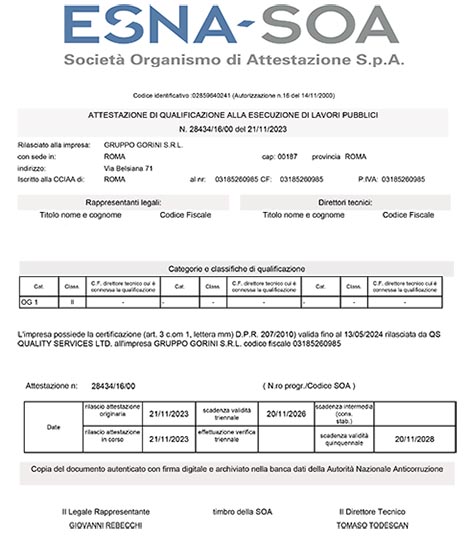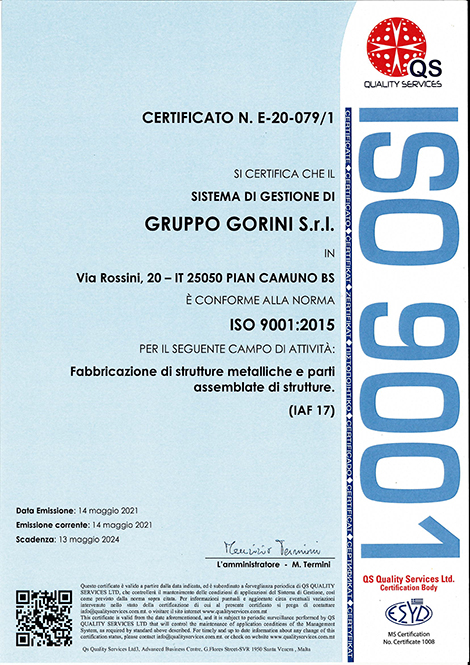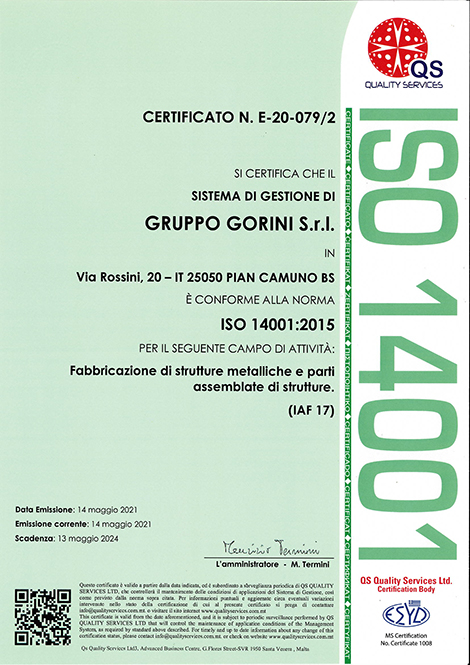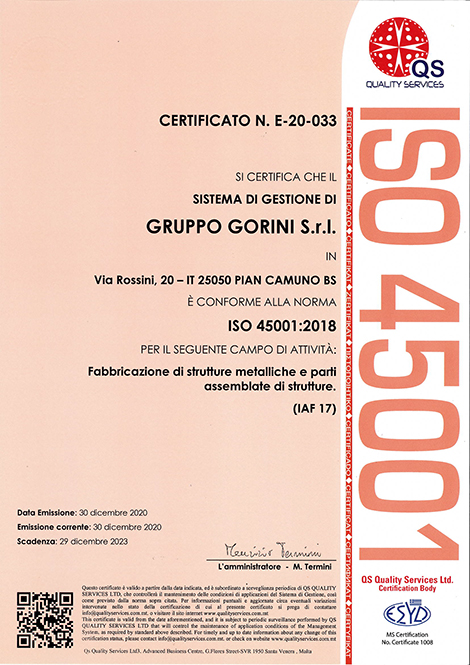CERTIFICATION SOA
CERTIFICATION ISO 9001
The primary purpose of ISO 9001 is the pursuit of customer satisfaction with the products and services provided, as well as the continuous improvement of company performance, allowing the certified company to ensure its customers the maintenance and improvement over time of the quality of its goods and services. ISO 9001 places at the centre of the creation of a management system:
- The customer and their full satisfaction;
- The study of the context and consequent entrepreneurial risks and opportunities;
- The vision of the company as a set of processes that are closely related to each other and aimed at providing products that constantly meet the established requirements;
- The importance of pursuing continuous performance improvement;
- Knowledge, management and monitoring of processes;
- The ability to measure their performance and the degree of achievement of objectives;
Benefits
- Make systematic the assessment of risks and opportunities on which to base strategic decisions;
- Adoption of an organisational model based on an integrated approach to processes and the sharing of the experiences of individuals to effectively and continuously improve performance;
- Increase the ability to meet the needs and expectations of its customers through better knowledge and control of the company;
- Reduction of costs related to the inefficiency of the activities carried out;
- Timely definition of the responsibilities and paths of professional growth of the resources employed;
- Transparency towards the reference markets.
CERTIFICATION ISO 14001
ISO 14001 is a voluntary international standard, applicable to any type of public or private organisation, which specifies the requirements of an environmental management system. To define the management system compliant with ISO 14001 it is necessary to:
- Carry out an environmental analysis, that is, achieve a thorough knowledge of the environmental aspects (emissions, use of resources, etc.) that an organisation must actually manage, understand the legislative framework and the requirements applicable to the company and evaluate the significance of the impacts;
- Define a company policy;
- Define specific environmental responsibilities;
- Define, apply and maintain the activities, procedures and records required by the requirements of 14001.
Benefits
- Control and maintenance of legislative compliance and monitoring of environmental performance.
- Reduction of waste (water consumption, energy resources, etc.).
- Facilitations in financing procedures and bureaucratic/administrative simplifications.
- Instrument to support investment or technological change decisions.
- Tool for creating and maintaining business value.
- Instrument for safeguarding corporate assets and transparency in acquisitions/mergers (risk management).
- Ensuring a systematic and pre-ordained approach to environmental emergencies.
- Better relationship and communication with the authorities.
- Improvement of corporate image and reputation.
- Implementation of defined methods for the prevention of environmental crimes.
CERTIFICATION ISO 45001
ISO 45001 expands the level of proactivity in protecting the health and safety of workers and other stakeholders. Ensuring the correct identification of hazards and risks, and taking actions to eliminate or reduce them, translates into a better reputation in the company's sector, as consumers are increasingly aware of issues related to worker safety.
Benefits
- Better hazard identification and risk assessment, thus reducing the causes of accidents, the cost of accidents at work and the number of insurance premiums required.
- Greater management involvement and worker participation.
- Improving the level of trust and integrity of the brand.
- Validating an organisation's capabilities and ensuring profitable partnerships.



